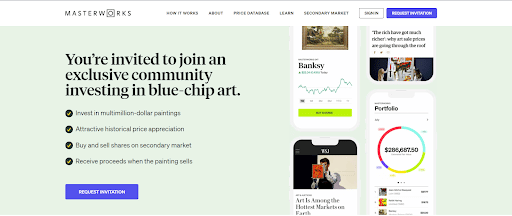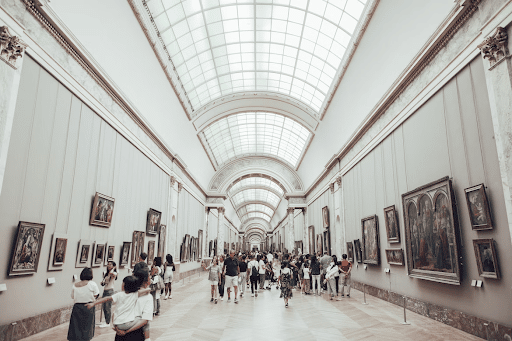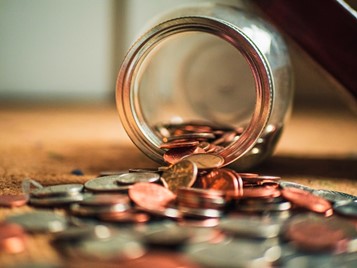When it comes to investing, most people tend to think of stocks, bonds, and of course, cryptocurrency. However, there’s one alternative asset class that people tend to look over – and that’s fine art.
Fine art has been around for centuries and has been used as an investment vehicle for just as long. And while it might not be as liquid an investment as stocks or crypto, fine art can nonetheless be a profitable endeavor – if you know what you’re doing, that is.
In fact, contemporary art investments have outperformed the S&P 500 over the past 25 years, offering an average annual return of 14%. Not too shabby.
From Van Gogh to Banksy and Warhol to Dali, there are plenty of artists whose work can fetch a pretty penny on the open market. But unless you’re already an art world insider, it can be tough to know where to start.
The problem with investing in art
Despite the potential for healthy returns, there are a few roadblocks that make investing in art difficult for the average person.
First, there’s the issue of accessibility. Unless you have millions of dollars to spare, it’s tough to get your foot in the door of the art world. And even if you do have the cash, it can be hard to find the right piece of art to invest in – especially if you’re not an expert.
Then there’s the fact that art is notoriously illiquid. It can take years to find a buyer for your piece, and even longer get your money out of the investment. To make matters worse, the art market is often opaque, making it difficult to track the value of your investment over time (this is because investments are typically appraised when they’re bought or sold).
Oh, and let’s not even mention the issue with storage, insurance, and security. If you’re not careful, your million-dollar painting could end up being ruined by a leaky roof or stolen by thieves. Talk about a risky investment!
Fortunately, there are ways to mitigate these risks and make art investing more accessible, liquid, and transparent, even to the average investor. Here are three platforms that are shaking up the art world and making it easier than ever to get involved in the market.
Yieldstreet


Image source: Yieldstreet
Yieldstreet is an alternative investment platform that offers access to a variety of private markets, many of which are only available to institutional and high-net-worth investors.
Their primary ethos is to empower investors to be able to exercise their own judgment and have more control over their financial future across several key categories, including real estate, legal, and of course, art.
There are six funds to choose from when investing in art with Yieldstreet, each with a different term, payment schedule, and minimum investment. You can also choose what type of art class you want to invest in, whether it be blue-chip masterpieces, mid-career artists, or up-and-coming talent.
Yieldstreet is able to offer access to such high-end opportunities since it only allows investors to purchase small individual pieces of famous artwork instead of buying the entire piece outright.
In fact, you’re actually investing in portfolios of backed loans and fractionalized shares of art. However, the one major caveat here is that the minimum investment with Yieldstreet is $10,000, which may price out some investors.
Artfi


Image source: Artfi.
Artfi is a blockchain-based fine art investment platform that allows you to buy, sell, and trade fractionalized shares of artworks over the Polygon network.
The platform accepts consignments from galleries, artists, auction houses, and private collectors (ranging in value from $1 to $10 million). After being assessed by Artfi’s team of experts, the artwork is listed on the platform and made available for purchase in the form of 10,000 unique NFTs.
Once again, this means you’re not buying the entire piece, but rather a fraction of it.
There are many benefits to this approach to fine art investment, with the main one being accessibility. By fractionalizing these pieces of art, Artfi makes them more affordable and therefore accessible to a wider range of investors.
Another benefit is 24/7 liquidity. Since the artworks are stored on the blockchain, they can be bought and sold instantly – making it a much more liquid investment than traditional artwork.
There are also no KYC requirements, which is a huge plus for those looking to avoid the bureaucracy associated with traditional art investment. Artfi is also introducing royalties, which means that both artists and collectors can continue to earn profits after the painting has been sold.
Picasso, Sacha Jafri, and V.S. Gaitonde are some of the artists that have been featured on Artfi, and the platform plans to add more in the future.
Masterworks


Image source: Masterworks.
Masterworks is an investment platform that allows you to buy shares of iconic paintings from some of the most famous artists that have ever lived, including Andy Warhol, Pablo Picasso, and Jean-Michel Basquiat.
Similar to the other platforms mentioned in our list, the idea behind Masterworks is to make art investing more accessible and liquid by allowing investors to buy shares of paintings instead of buying the entire piece outright. This approach makes it possible for investors to get exposure to blue-chip artwork without having to fork over millions of dollars.
Most of the paintings Masterworks purchases are from auction houses, private sellers, and established galleries, and each item is carefully vetted by their team of art experts. From there, the company securitized the artwork with the SEC so investors can purchase shares.
Once invested, you have the option to sell your shares on the secondary market, or you can wait until the painting is sold and cash out then.
Final thoughts
Fine art investment can be a great way to diversify your portfolio and potentially earn some solid returns. However, it’s important to do your research and understand the risks involved before investing any money.
With that said, the platforms we’ve mentioned in this article are all reputable and are well worth considering if you’re looking to get into the fine art investment game. Now it’s just a matter of thinking about which artist you want to invest in first!






